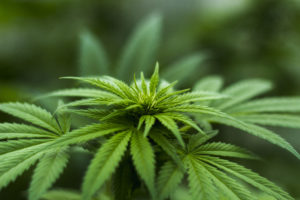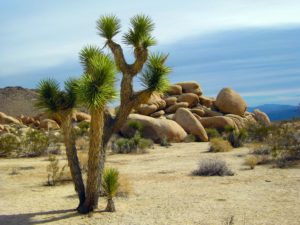2018 is the year for Joshua Tree Community growth! In 2017, the Joshua Tree Communities have seen the continuation and beginning of growth and 2018 is no exception. With a continued boom of tourism, implementation of the Sewer Project, and questions about the future of commercial marijuana cultivation in Yucca Valley, there are many exciting possibilities about the Joshua Tree Community’s cultural and economic future. Below I outline the Joshua Tree Community year in review and some of the 2017 highlights and what it means for property values.
Yucca Valley Sewer Project
The High Desert Water District’s Sewer Project kicked off the year with construction that began January 5, 2017. The Morongo Basin is required to have a wastewater collection and treatment system to comply with a State mandate prohibiting discharge from septic tanks in the surrounding area.
What this means:
Adding a sewer system means more growth for the community! More jobs will be formed, more businesses come in, and real estate prices can increase. Currently, businesses who want to establish in Yucca Valley (the economic heart of the Morongo Basin) must build a private septic system since they are unable to connect to a sewer system. This process of building a private septic system can be very costly and has discouraged some businesses from establishing. With a sewer system established, businesses no longer need to worry about the high cost of installing their own septic, and can simply hook up to the main sewer line. Real estate prices also can increase when connected to a sewer line. Depending on the area, if more homes have a sewer line and one house in the area does not, there is a slight discount on price for the home connected to septic. More homeowners prefer a sewer connection because of the ease of maintenance.
Continued Success with Festivals
For years, the Morongo Basin has been an escape for music lovers who wanted to have a more personal experience with not only the performers, but with the rest of the audience as well. Year-round there are activities and events that attract thousands of visitors such as the UFO event and Bhakti fest (and much more yoga festivities!). In particular, two major music festivals occur in the Morongo Basin: Joshua Tree Music Festival and Desert Daze. Joshua Tree Music Festival is held 2 times a year. In 2017, the Joshua Tree Music Festival was held between May 18-21 and again October 5-8. Desert Daze was held shortly after October 12-15. Combined, Joshua Tree Music Festival brought in over 5,000 people, and Desert Daze brought in over 5,400 people.
What this means:
Part of the money brought in through the festival is given back to the community, as well as tourists spending more money in the surrounding community through hotels, shopping, and food. The High Desert music scene is beginning to explode and the cost of admission isn’t free either: Joshua Tree Music Festival tickets began at $190, and Desert Daze prices ranged from $120 – $529. More and more people are learning about these festivals and want something alternative to do throughout the year other than Coachella. The venues are adapting to the volume of visitors as well. In 2017, The Joshua Tree Music Festival’s venue at the Joshua Tree Lake campground had to cap off the amount of attendees due to space and opted for a more intimate setting. The Joshua Tree Lake campground is planning on expanding their festival site to accommodate more people. With more people means more money for the community, more growth, and more jobs.
Cannabis Cultivation

On November 1, 2017, the Yucca Valley City Council verified a petition to allow marijuana cultivation, manufacturing, and testing in industrial areas of town in the ballot on the June 5, 2018 primary election.
What this means:
Legalizing marijuana cultivation would mean more jobs in the Joshua Tree Communities. In turn, this will boost the economy and property values will increase. Overall, we would see a rise in property values. Homes located next to a grow warehouse will also rise in property value, but may be 8% lower compared to nearby comparables due to smell. Studies show that homes located next to a marijuana dispensary actually rose in price 12% compared to nearby comparables. Since Marijuana is still a developing industry in California, more studies have to be conducted to see how exactly the cannabis industry will affect the real estate economy.
Joshua Tree National Park Visitors

December 31, 2017 Joshua Tree National Park clocked in almost 2.4 million visitors for the year.
What this means:
More money for the surrounding communities and more economic growth. In 2015 just with over 2 million visitors, the National Park visitors generated almost $100,000,000 to the surrounding communities and sustained over 1,300 jobs. Cumulatively, the spending benefited the local economy of $128,226,700. In 2016, that dollar mount rose and Joshua Tree National Park had a cumulative benefit to the local economy of $164,529,900. The real estate values have already felt the positive effects of park visitors. Homes in Joshua Tree often sell for over ask, all-cash, especially if it is an “AirBnB” style home that is in a good location and rests on plenty of land. With low gas prices, many LA week-enders seek escape from the big city, Joshua Tree is ideal because it is relatively close, offers world-class rock climbing, and a cheaper alternative than foreign travel. Desert enthusiasts and investors alike purchase small homes and cabins to turn into short-term vacation rentals at a relatively low cost and can turn nice a profit if marketed correctly.
Final Thoughts
The Joshua Tree Communities are still in the early stages of development. Overall, I see a continued increase in property values not only from the Joshua Tree National Park visitors, but from the installation of the sewer system in Yucca Valley. The question of whether Marijuana cultivation will be allowed in Yucca Valley is something to keep an eye on too since it will affect the local economy.
Is the Morongo Basin a sleeping dragon? Or will this area remain a quiet, rural community? I’d love to hear your thoughts!
